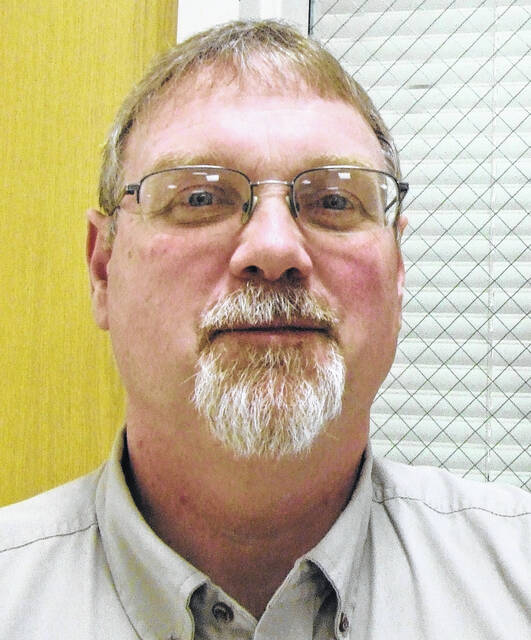
Now that fair is out of the way, it is time to get ready for the SW Ohio Corn Growers field day.
Fayette County will be the place to be on August 16. The Southwest Ohio Corn Growers Association, in conjunction with the Fayette County Extension Agronomy Committee, will hold their annual field day and agronomy plot demonstrations.
The event will be held at the Fayette County Research and Demonstration Farm — located northeast of Washington CH at 2770 Old Route 38 — 9 a.m.-2 p.m. at the Fayette County Airport.
It is free to attend and will include a free lunch — and don’t forget the free homemade ice cream.
Certified Crop Advisor credits will also be available for the various sessions of the event.
The event will begin promptly at 9 a.m. in the Equipment Building with our keynote speakers, Eric Romich and Barry Ward.
Romich is a Field Specialist for Energy Development at the Ohio State University. He will be speaking on “Energy Contracts for Landowners”.
Ward is the Leader of Farm Business Management at the Ohio State University. He will be discussing “Land Values, Cash Rental Rates, Input Costs, and Budgeting”.
After our keynote speakers, there will be a variety of other educational sessions in tents around the exhibit area and the Equipment Building. The sessions will include presentations by Jim Hershey of the No-Till Alliance on the “Benefits of Soil Health”, “Fungicide and Soybean Cyst Nematode, Soybean Research” presented by Horacio Lopez-Nicora from the Ohio State University, “Tar Spot – Status, Identification, and Control” presented by Pierce Paul from the Ohio State University, “Hot Topics in Corn Production” presented by Osler Ortez also from the Ohio State University, and the Fayette County Master Gardeners will be presenting on “No-till Gardening”.
Additionally, representatives from the National and Ohio Corn and Wheat Growers will give updates on state and national activities the organization has been monitoring and participating in.
Beyond the educational sessions, agricultural equipment, technology, lending, marketing, seed, and chemical companies will be available throughout the event to answer questions and display their newest, innovative products.
If you are interested in being an exhibitor, there is still availability to participate. Go to fayette.osu.edu to download a registration form to become an exhibitor.
At lunch, a drawing will take place for Corn and Wheat Grower members. The drawing includes two gift certificates for $500, one for seed and one for equipment parts at participating businesses. Membership is available the day of the event and members are eligible to win one of the gift certificates. Winners must be present to win.
The Fayette County Health Department and Fayette County Hospital will also be present to offer health screenings and tetanus shots for those interested. Please fast prior to the health screening for blood testing; these will begin at 8:30 a.m. The Fayette County 4-H program will be serving hot breakfast sandwiches and coffee to start the day.
Questions about any portion of the day’s events can be directed to either Ken Ford, Fayette County ANR Educator, at 740-335-1150, [email protected] or Tony Nye, Clinton County ANR Educator, at 937-382-0901, [email protected]
It is also time to start scouting many of our crops for the presence of diseases and insects. To this point there has not been much to see but as we all know, that can change very quickly in our fields. This week I wanted to share some information regarding soybean foliar fungicide applications provided by Ohio State University Agronomy specialists, Laura Lindsey, Andy Michel, and Horacio Lopez-Nicora.
When should I spray a foliar fungicide?
First, consider the disease triangle.
For a disease to develop, there must be: 1) a susceptible host (Is your soybean variety resistant or susceptible?), 2) a virulent pathogen (Is there a history of a certain disease in your field? Do you see any visual symptoms of disease?), and 3) conducive environmental conditions. Most foliar diseases, such as brown leaf spot and frogeye leaf spot, are favored by wet conditions.
In OSU trials, brown leaf spot and frogeye leaf spot tend to be the two most common soybean diseases. In these trials, researchers measured a yield response to foliar fungicide applied at R3 in 9 out of 28 environments, ranging from 4 to 8 bu/acre.
At the responsive locations, which tended to be in central and southern Ohio, there were foliar diseases present (brown spot and frogeye leaf spot).
Additionally, these positive yield responses occurred in years with greater precipitation. Very little to no yield response occurred in dry years and in years when soybeans were flooded. If you have visual symptoms of disease, a conducive environment, and susceptible variety, R3 is a good time to spray a foliar fungicide.
Next, we must decide what fungicide to use and there are several products available for control of foliar diseases. Researchers across the U.S. constantly compare and evaluate fungicide efficacy for control of major soybean foliar diseases. The North Central Regional Committee on Soybean Diseases (NCERA-137) annually updates this information.
Finally, if you decide to spray, we recommend using fungicide products that contain active ingredients from different fungicide mode of action groups. This will minimize the risk of developing fungicide resistance by the pathogen.
For example, resistance to the strobilurin (QoI – FRAC Group 11) fungicides has been reported in the fungus that causes frogeye leaf spot in Ohio; therefore, strobilurin fungicides alone should be avoided when managing this disease.
If you suspect that fungicide resistance is an issue in your field and/or you want to learn more about fungicide resistance, contact me at (937) 382-0901 or [email protected].
Tony Nye is the state coordinator for the Ohio State University Extension Small Farm Program and has been an OSU Extension Educator for agriculture and natural resources for over 30 years, currently serving Clinton County and the Miami Valley EERA.


